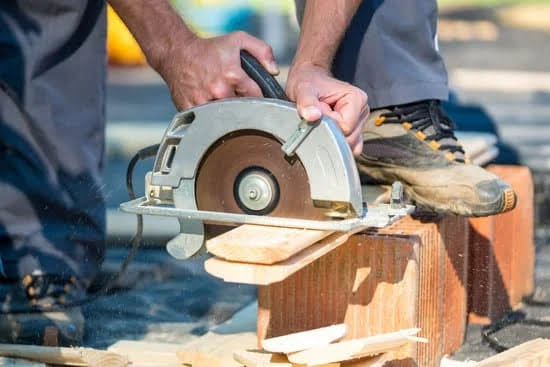Introduction to Woodworking Spindle Sanders
A woodworking spindle sander is a tool used for sanding and shaping curves in wood to produce smooth, intricate shapes. Spindle sanders are composed of a rotating drum or cylinder with a belt attached to it. With varying grits and speeds, the sander enables users to make delicate and detailed modifications to their projects.
Common uses for these tools are smoothing curved edges on tables, chair legs, railings, posts, and more. These tools can also be used for rounding off corners on boxes or producing convex or concave surfaces on cut-offs. Spindle sanders are also used during furniture construction and finishing applications including creating oval shapes on table or chair aprons or producung curved molds for chairs. In addition woodworkers often use them to create ornamental details such as swirls and swells into wooden bowls, spindles-turned columns, on turned legs, posts and rails of furniture, as well as many other decorative craft items.
Common Types of Spindle Sanders
Belt Spindle Sander: This type of spindle sander is used for sanding flat surfaces and is great when you need to smooth out a large surface area quickly. It works by running an electric motor which turns a belt over a series of rotating barrels. The sanding process occurs when the belt hits the surface, smoothing it as it spins around the barrels.
Disc Spindle Sander: Disc spindle sanders rotate discs, rather than belts and are typically used for shaping contours, bevels, and other more intricate designs in wood. They can also be used on softer materials such as foam and plastic. Discs can range in size from 1” to 6” in diameter and may or may not have a pattern carved into them for additional control.
Drum Spindle Sander: Drum spindle sanders use cylindrical drums mounted onto their motors for sanding smooth arcs, curved edges, and other concave shapes. These machines can hold any size drum ranging from 2-6 inches long with grit abrasive material applied to the outside edge so that it makes contact with the wood surface as it spins.
Oscillating Spindle Sander: Oscillating spindle sanders combine both the disc and drum sanders into one machine that oscillates back and forth instead of running in a circle like traditional machines do. By doing this they increase efficiency by allowing more surface area to be completed in less time while still providing detail work like complex curves or recessed shapes such as bowls or cups.
How to Select the Right Spindle Sander
The first step in selecting the right type and size of spindle sander for your project is to consider the material that you’re working with, as different types and sizes will work better for different materials. For instance, a wide belt sander is best for shaping and smoothing large pieces of wood or plastic, while a small-diameter spindle sander is better suited for sanding curved rails and spindles.
Questions to ask when making a purchase include:
• What kind of power source do I need? The power source can vary depending on the size and type of spindle sander you are buying; electric, pneumatic, or air driven models all have different requirements.
• Is there any additional equipment required? Depending on the model you choose, you may need to buy additional accessories such as dust bags or routers.
• How easy is it to use? This will depend on the features that your particular model has – some offer controls for speed and direction whereas others require more manual manipulation.
• Does the manufacturer offer a warranty? Knowing the warranty period ensures that you are covered if anything does go wrong with your new tool.
Maintenance and Care of Spindle Sanders
Regular inspection and maintenance of your spindle sander is important to ensure maximum performance, life and safety. Before operating any spindle sander, it should be checked and thoroughly inspected for signs of wear or damage. The most important component to inspect is the spindle shaft — if the sanding sleeve binding or wobbling on the shaft, stop use immediately as this could indicate that the spindle is bent or damaged.
To ensure continued performance from your spindle sander, it’s recommended to clean and lubricate moving parts regularly. The motor bearings should also be lubricated as needed. Additionally, all dust buildup should be removed with a cloth or brush. If a belt is used on the machine, making sure that it is tightly positioned is highly recommended as well; if it’s loose, adjust it according to your owner’s manual instructions. It’s also recommended to inspect other moving parts such as tension knobs, screws, attachments and accessories periodically.
In order to get more information regarding proper maintenance of your spindle sander, check out some helpful maintenance guides available online (such as Craftsman’s guide) that will provide specific directions for cleaning and caring for your machine correctly and safely. This can help you avoid injury from improper care or potential danger from an unclean machine in general.
Using the Spindle Sander Effectively
When it comes to using the Woodworking Spindle Sander effectively, there are a few key techniques that can help ensure safe operation and successful projects.
1. Start by understanding the types of sanding drums available and choose the right one for your project. Make sure to read and follow all safety instructions before operating the tool.
2. Once the drum is mounted, secure it from spinning or moving during use. One way of ensuring it remains locked in place is using a washer through the centerhole so that when spinning, it will not vibrate out of position.
3. When sanding curves, you’ll need less pressure than when you’re handling straight lines since curves are more forgiving to handle as long as you keep them on track. You should also start at lower speeds than with straight lines for better control over the shape you’re making.
4. Adjust your table appropriately for each material depending on its thickness; if not well adjusted, the spindle sander could cause ridges or ‘waves’ that would interfere with precision results down the line when finishing off a project. To avoid this problem, ensure that there’s just enough give to keep everything securely in place while still allowing movement around curves in particular areas while sanding.
5. Always wear safety gear such as eye protection and appropriate ear protection while operating spindle sanders – they are very noisy machines! Also remember not to overload them; if doing multiple pieces of material at once make sure they [pieces] fit snugly close together on the rotating drum surface without stacking up too much material at once; overloads can cause damage to your project or injuries resulting from sudden stops or jolts due to overloads putting extra strain on motors and belts which could break them prematurely or result in components flying out unexpectedly with powerful force during operation .
Benefits of Owning a Woodworking Spindle Sander
1. Superior Wood Finishing – Spindle sanders provide better wood finishing with less effort. Professional woodworkers can save time, achieve a much finer finish, and require fewer steps in their project’s sanding process when utilizing a spindle sander.
2. Versatile Application – Spindle sanders are used for contouring the edges of projects such as shaped mouldings, arcs and other curved surfaces so they can be easily finished using the same tool. This eliminates the need to utilize different tools for each task.
3. Durable & Long Lasting – Spindle sanders are made to be durable and last a long time when properly maintained due to their heavy-duty construction materials as opposed to other types made from lighter materials that don’t last as long or perform as well.
4. Cost Effective – In comparison with orbital sanders and manual hand-sanders, spindle sanders are typically more cost effective because they are capable of providing better results with fewer passes over the material being worked on, thereby reducing labor costs associated with most projects since the quality is greater than other methods and overall time spent is lessened in order to reach desired results faster and easier.
5. Recessed or Express Work Areas – With better control of the depth, productivity is increased since there’s less wasted motion due to having separate recessed or express work areas within the same space on the machine’s platform allowing for efficient workflow amongst tasks at hand while eliminating unnecessary changes in setup times required between operations that would otherwise need additional downtime.
Testimonies of Professional Woodworkers – “The spindle sander has been absolutely indispensable in my shop! I love how it gives me more control over contours and curves on projects I’m working on” – John F., Professional Woodworker; “It takes off so much time from sanding by hand which gives me more time for creating craftwork quickly” – Elisabeth U., Hobbyist Woodcrat; “I’m very happy I bought this spindle sander! It makes perfect circles with ease” – Sam C., Carpentry Student
Best Spindle Sanders on the Market
A woodworking spindle sander is an essential tool for any professional or hobbyist woodworker. Spindle sanders are used to smooth and refine edges, curves and other irregular shapes in a variety of materials including soft woods, hardwoods and plastic.
The market for spindle sanders has grown significantly in recent years thanks to the development of portable models that can be easily transported to remote sites or small job sites. Many of these models also feature variable speed settings, allowing users to match the correct speed for their particular application. In addition, some high-end models include dust collections systems which are particularly useful when working with materials that can cause large amounts of dust such as MDF or particle board.
Below is a comparison chart displaying the characteristics of the most popular spindle sander models currently available on the market:
Model Name | Variable Speed Settings | Dust Collection System | Weight (KG)
———————————————————
Jet 1221VS | Yes | Yes | 16.3
DeWalt DW660KT1| Yes | No | 3.2
Craftsman 31511760|No|Yes|11.7
Bosch ROS20VSC|Yes|No|2.7
In addition to this comparison chart, it’s important to review user reviews and recommendations from other professionals in order to find out which model best suits your needs and budget. Reading customer reviews can help you understand exactly how different features compare between each model, allowing you to make an informed decision on which model will serve your purpose best.
Conclusion
In conclusion, readers have learned how useful and essential a woodworking spindle sander can be for the process of sanding different shapes and textures on wood. This tool operates with a spinning mandrel with multiple accessories for various applications. It helps achieve smooth, clean surfaces quickly and efficiently. Readers are now better informed about the importance of having a woodworking spindle sander in their arsenal of tools. We invite readers to share their experiences with this tool in the comments section below!

Hi everyone! I’m a woodworker and blogger, and this is my woodworking blog. In my blog, I share tips and tricks for woodworkers of all skill levels, as well as project ideas that you can try yourself.





